
Wine Culture and Information since 2002 - Volume 22
 Wine Culture and Information since 2002 - Volume 22 |
|
Contrasts of Colli Martani Sangiovese and Cilento AglianicoUmbria and Campania compared in the glasses of this month's tasting with two of the main red grape varieties grown in their respective territories |
|
Sangiovese and Aglianico are among the most common Italian red grape varieties of the country. Their spreading, just like any other variety, is determined by geographic and climatic conditions – Sangiovese is mainly present in Central Italy, Aglianico mainly in the South – and in their respective territories they prove to make wines with a high identity. This interesting quality – it should be noted – is also determined by the clonal differences belonging to their respective varieties, in particular Sangiovese, probably the Italian grape with the greatest number of official and identified clones. For these reasons, it is always difficult to talk about Sangiovese and Aglianico with the aim of determining a reliable reference, both for the remarkable expression and adaptability of these two grapes in the different types of soil and climate, and for the quantity of existing clones, capable of completely change the identity of their wines. Indeed, it is difficult to compare a Brunello di Montalcino with a Sangiovese produced in the Marche region, as well as an Aglianico del Vulture with an Aglianico produced in Apulia. Although the grapes are the same, the wines are clearly and very different, even distant. Of course, it is possible to talk about the primary and fundamental characteristics that can be typically associated to the varieties, however the differences become notable and distant, sometimes also by giving the idea – and in fact this is what we are talking about – of two different wines and, sometimes, even produced with different grapes. The same considerations obviously apply to both Colli Martani Sangiovese and Cilento Aglianico – the wines of our tasting by contrast – two expressions, with their respective varieties, which have no correspondence in other wines and territories. Conditions which, undeniably, are also strongly determined by the different and respective territorial and climatic conditions.
|
|
Umbria, land of saints and heroes, of art and history, culture and tradition. These are just some of the definitions used to emphasize and praise the specific qualities of the green heart of Italy. Umbria, of course, is much more than this because – and not least – it is also a great land of fine food and excellent wines. Despite it is among the regions of Italy with the smallest surface area, Umbria has several wine-growing areas, recognized both with Denomination of Controlled Origin (Denominazione d'Origine Controllata, DOC), and Denomination of Controlled and Guaranteed Origin (Denominazione d'Origine Controllata e Garantita, DOCG). Among them, there is the vast wine-growing area of Colli Martani, among the largest DOCs of Umbria, both by extension and surface. Furthermore, it should be noted that the area of Montefalco DOC – the magnificent land of Sagrantino – is almost entirely contained within the Colli Martani appellation, however being two territories and distinct appellations, despite sharing many of the varieties cultivated in these areas for the production of their respective wines. The Colli Martani denomination also includes within its territory Todi DOC and part of the Spoleto DOC, extends from the territory of Todi up to that of Montefalco, also including Spoleto and, to the north, extends up to near the territory of Torgiano. There are two undisputed glories of this appellation: Grechetto and Sangiovese. Whether for Grechetto – the most famous white berried variety of Umbria – here it is exclusively cultivated the G5 clone, now better known as Grechetto Gentile, while the spreading of Sangiovese, here as elsewhere, consists of several clones. The production of Sangiovese in the Colli Martani is strongly affected by the climate determined by the hills found in this territory, a characteristic that is perceived, particularly, in the structure of these wines. According to the production disciplinary, Colli Martani Sangiovese is produced with at least 85% of the homonymous variety, while the remaining and possible part can be made of varieties allowed for cultivation in Umbria. The production disciplinary also provides for the Riserva style, just like for all the other red wines of the appellation.
|
||||
|
Aglianico del Cilento has its own personality, virtually unique and difficult to find in other territories where this extraordinary red grape variety is found. When it comes to Aglianico, its most famous enological references undeniably are Taurasi – in the province of Avellino – Taburno, in the province of Benevento, and Aglianico del Vulture, in the province of Potenza, that is in Basilicata region. These are, undeniably, extraordinary interpretations of Aglianico, however it should be considered that the wines produced in these lands and with this variety are strongly influenced by the soil where the vineyards grow, that is a soil of volcanic nature for Taurasi and Vulture, marly for Taburno. On the other hand, the soil of Cilento, in addition to being very different in composition, is characterized by the so called flysch of Cilento, a soil rich in clay and limestone. These factors, in fact, strongly influence the character of Aglianico del Cilento, giving it a personality that is absolutely unique on its own. According to the production disciplinary of Cilento DOC, the wines of this territory produced with Aglianico require the minimum use of 85% of the homonymous variety, while the remaining part can be represented by red berried grapes allowed to cultivation in the province of Salerno. The production disciplinary also provides for the Riserva style. In this regard, it should be noted that, although the aging in cask is mandatory for the Riserva style – at least two years – the practice of using the wooden cask is also quite common for the wine not destined to this style. The reason is certainly depending on the specific characteristics of Aglianico and, in particular, to its typical sensation of crispness given by acidity. The aging in wood, in fact, allows the rounding of this aspect, as well as giving the wine a fuller structure and astringency.
|
Before starting this month's tasting by contrast, let's proceed with the choice of the two wines that we will pour into the glasses. As already mentioned, in both cases, the respective production disciplinary provide for the use of a minimum 85% of the variety stated in the label, a characteristic that – it must be said – is common in many DOC wines of Italy and which are declared on the label as mono-varietal. For this reason, both for Colli Martani Sangiovese and Cilento Aglianico, we will make sure they are produced with the two varieties alone. We will also pay attention to the enological aging technique used for both wines and – contrary to what we generally do in our tastings by contrast – in this case the choice is in favor of the aging in large casks. The reason is mainly due to the tendency of Cilento producers who generally age their Aglianico in cask, therefore we will use the same production criteria for Colli Martani Sangiovese as well. The wines we will pour into the glasses should preferably have two years of aging and will be served in their respective tasting glasses at a temperature of 18 °C. (65 °F) Let's pour Colli Martani Sangiovese and Cilento Aglianico into their respective tasting glasses and begin the sensorial evaluation of the two wines, taking into consideration the Umbrian wine. Let's tilt the glass over a white surface – a sheet of paper is enough – and observe the base, in order to appreciate the color of the wine. Colli Martani Sangiovese shows a brilliant and intense ruby red color, with a medium-low transparency. By observing the wine towards the opening of the glass, where the thickness is thinner, we evaluate the nuances of the Umbrian wine, confirming the same ruby red hue. Let's now pass to the evaluation of the appearance of Cilento Aglianico and, just like the previous wine, we tilt its glass over the white surface. Let's observe the base of the glass: the wine from Campania reveals an intense and brilliant ruby red color, as well as a moderate transparency, not so different from the one of Colli Martani Sangiovese. Let's now evaluate the nuances of Cilento Aglianico by observing the wine towards the opening of the glass: also in this case the ruby red hue is confirmed. The olfactory profiles of the wines produced with Sangiovese and Aglianico are decidedly distant. Moreover, as already mentioned, the sensorial differences introduced by the respective clones must also be considered, although all of them express the olfactory qualities typical of the two varieties. Wines produced with Sangiovese are characterized by aromas of red and dark pulp fruits, in particular, black cherry, cherry, plum, raspberry and blueberry. Furthermore, Sangiovese has olfactory qualities that can be associated to the world of flowers, in particular violet and rose. The olfactory profile of wines produced with Aglianico, of course, is as interesting and varied as that of Sangiovese and, also for wines produced with this variety, sensations of red and dark pulp fruits are perceived. Specifically, in wines produced with Aglianico can be appreciated pleasing aromas of black cherry, blackberry and plum, frequently raspberry and strawberry, sometimes even black currant. In its wines can also be perceived olfactory sensations belonging to the world of flowers, in particular violet and cyclamen. Let's now pass to the evaluation of the olfactory profiles of Colli Martani Sangiovese and Cilento Aglianico, taking into consideration – as for the previous examination – the Umbrian wine. By holding the glass in vertical position and without swirling, let's proceed with the first smell in order to appreciate the opening of the wine, that is its primary and identifying aromas. From the glass emerge, clear and intense, pleasing aromas of black cherry, plum and violet, a rather common opening for wines produced with Sangiovese grape. Let's swirl the glass of the Umbrian wine and do the second smell: the profile is completed with blueberry, raspberry and rose, in addition to the typical sensations associated to the aging in wood, in particular vanilla and chocolate. Let's now pass to the evaluation of the opening of Cilento Aglianico and, by holding the glass in vertical position, without swirling, let's do the first smell. From the glass emerge intense and pleasing aromas of black cherry, plum and blackberry. After having swirled the glass and proceeded with the second smell, the wine from Campania completes its profile with violet, blueberry, raspberry, strawberry and cyclamen, in addition to the sensations produced by the aging in wood, also in this case expressed by vanilla and chocolate. Let's proceed with the evaluation of the gustatory profiles of the wines of our tasting by contrast, starting with the analysis of the attack of Colli Martani Sangiovese, therefore examining the primary sensations the wine expresses in the mouth at the first sip. The primary qualities perceived in the Umbrian wine are represented by a pleasing sensation of crispness that finds a prompt balance in the roundness, both of the alcohol and of the aging in wood, however having a well perceptible sensation of astringency, decidedly moderate. The structure is well perceptible – although not powerful – and can be perceived the flavors of black cherry, plum and blueberry, confirming the good correspondence to the nose. Let's move on to the evaluation of the attack of Cilento Aglianico and take a sip of the wine from Campania. In the mouth we immediately perceive the typical crispness of Aglianico, which could be defined moderate when compared to the Aglianico wines produced in volcanic soils, in addition to the perception of the effect of alcohol, however in balance with the sensation of roundness, also given by the aging in wood. The sensation of astringency is perceptible – generally more intense than Colli Martani Sangiovese – however in balance with the rest of the gustatory profile. In the mouth, finally, we perceive the flavors of black cherry, plum and blackberry, confirming the good correspondence to the nose. After having analyzed the gustatory profiles of the two wines, we conclude the tasting by contrast of Colli Martani Sangiovese and Cilento Aglianico with the evaluation of the final sensations perceived in the mouth after swallowing. In particular, we will evaluate the taste-olfactory persistence, that is the measure of the time during which it is possible to perceive the gustatory and aromatic sensations of the wine after having swallowed it. The finish of Colli Martani Sangiovese is persistent, leaving in the mouth a pleasing sensation of crispness in contrasts to the moderate roundness and astringency. In the mouth we continue to perceive the flavors of black cherry, plum and raspberry. The finish of Cilento Aglianico is equally persistent and, even in this wine, the sensations of crispness and pleasing roundness continue to be perceived, with a sensation of astringency generally more intense than the Umbrian wine. Among the flavors Cilento Aglianico leaves in the mouth we clearly recognize black cherry, plum and blackberry. By keeping the glasses one near to each other, let's do the last smell, first Colli Martani Sangiovese and then Cilento Aglianico, an operation that further confirms the olfactory differences of the two wines.
|
||||||||
Wines of the Month |
|
|
|
Score legend Prices are to be considered as indicative. Prices may vary according to the country or the shop where wines are bought |
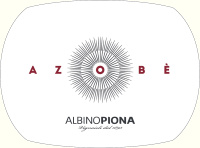
|
|
Azobè 2016 |
|
| Albino Piona (Veneto, Italy) | |
 n.d. n.d. | |
| Price: € 19.00 | Score: |
 Brilliant ruby red and nuances of garnet red, little transparency. Brilliant ruby red and nuances of garnet red, little transparency. Intense, clean, pleasing and refined, starts with hints of black
cherry, blackberry and plum followed by aromas of dried violet, dried rose,
tobacco, hay, cocoa, vanilla and menthol. Intense, clean, pleasing and refined, starts with hints of black
cherry, blackberry and plum followed by aromas of dried violet, dried rose,
tobacco, hay, cocoa, vanilla and menthol.
 Properly tannic attack and however balanced by alcohol, good body,
intense flavors, pleasing roundness. Properly tannic attack and however balanced by alcohol, good body,
intense flavors, pleasing roundness.
 Persistent finish with flavors of black cherry, blackberry and plum. Persistent finish with flavors of black cherry, blackberry and plum. 12 months in cask. 12 months in cask. |
|
 Broiled meat and barbecue, Roasted meat, Stewed meat, Cheese Broiled meat and barbecue, Roasted meat, Stewed meat, Cheese |
|
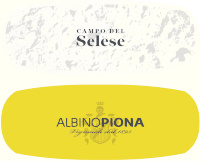
|
|
Bianco di Custoza Superiore Campo del Selese 2019 |
|
| Albino Piona (Veneto, Italy) | |
 Garganega (40%), Friulano (20%), Cortese (20%), Chardonnay (10%), Trebbiano di Soave (10%) Garganega (40%), Friulano (20%), Cortese (20%), Chardonnay (10%), Trebbiano di Soave (10%) | |
| Price: € 13.00 | Score: |
 Intense straw yellow and nuances of golden yellow, very transparent. Intense straw yellow and nuances of golden yellow, very transparent. Intense, clean, pleasing, refined and elegant, starts with hints of
apple, plum and citrus fruits followed by aromas of hawthorn, pear, peach,
broom, pineapple, banana, helichrysum, honey, hazelnut and vanilla. Intense, clean, pleasing, refined and elegant, starts with hints of
apple, plum and citrus fruits followed by aromas of hawthorn, pear, peach,
broom, pineapple, banana, helichrysum, honey, hazelnut and vanilla.
 Crisp attack and however balanced by alcohol, good body, intense
flavors, pleasing roundness. Crisp attack and however balanced by alcohol, good body, intense
flavors, pleasing roundness.
 Persistent finish with flavors of apple, plum and pineapple. Persistent finish with flavors of apple, plum and pineapple. Part of the Garganega ferments and ages in barrique. Part of the Garganega ferments and ages in barrique. |
|
 Stuffed pasta with mushrooms, Roasted white meat, Roasted fish, Legume soups Stuffed pasta with mushrooms, Roasted white meat, Roasted fish, Legume soups |
|
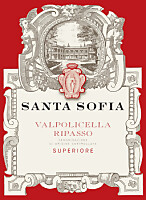
|
|
Valpolicella Ripasso Superiore 2017 |
|
| Santa Sofia (Veneto, Italy) | |
 Corvina, Corvinone (70%), Rondinella (30%) Corvina, Corvinone (70%), Rondinella (30%) | |
| Price: € 15.50 | Score: |
 Intense ruby red and nuances of garnet red, little transparency. Intense ruby red and nuances of garnet red, little transparency. Intense, clean, pleasing and refined, starts with hints of black
cherry, blackberry and dried violet followed by aromas of plum, blueberry,
chocolate, tobacco, cinnamon, licorice, vanilla and menthol. Intense, clean, pleasing and refined, starts with hints of black
cherry, blackberry and dried violet followed by aromas of plum, blueberry,
chocolate, tobacco, cinnamon, licorice, vanilla and menthol.
 Properly tannic attack and however balanced by alcohol, good body,
intense flavors, pleasing roundness. Properly tannic attack and however balanced by alcohol, good body,
intense flavors, pleasing roundness.
 Persistent finish with flavors of black cherry, blackberry and plum. Persistent finish with flavors of black cherry, blackberry and plum. 9 months in cask, 6 months in bottle. 9 months in cask, 6 months in bottle. |
|
 Broiled meat and barbecue, Roasted meat, Stewed and braised meat, Hard cheese Broiled meat and barbecue, Roasted meat, Stewed and braised meat, Hard cheese |
|
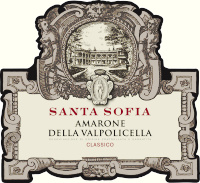
|
|
Amarone della Valpolicella Classico 2015 |
|
| Santa Sofia (Veneto, Italy) | |
 Corvina, Corvinone (70%), Rondinella (30%) Corvina, Corvinone (70%), Rondinella (30%) | |
| Price: € 39.90 | Score: |
 Deep ruby red and nuances of garnet red, little transparency. Deep ruby red and nuances of garnet red, little transparency. Intense, clean, pleasing, refined and elegant, starts with hints of
blackberry, black cherry and dried violet followed by aromas of prune,
cinnamon, tobacco, cocoa, licorice, leather, mace, rhubarb, vanilla and
menthol. Intense, clean, pleasing, refined and elegant, starts with hints of
blackberry, black cherry and dried violet followed by aromas of prune,
cinnamon, tobacco, cocoa, licorice, leather, mace, rhubarb, vanilla and
menthol.
 Properly tannic attack and however balanced by alcohol, full body,
intense flavors, pleasing roundness. Properly tannic attack and however balanced by alcohol, full body,
intense flavors, pleasing roundness.
 Persistent finish with flavors of blackberry, black cherry and prune. Persistent finish with flavors of blackberry, black cherry and prune. 36 months in cask, 12 months in bottle. 36 months in cask, 12 months in bottle. |
|
 Game, Roasted meat, Stewed and braised meat, Hard cheese Game, Roasted meat, Stewed and braised meat, Hard cheese |
|
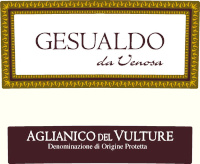
|
|
Aglianico del Vulture Gesualdo da Venosa 2017 |
|
| Cantina di Venosa (Basilicata, Italy) | |
 Aglianico Aglianico | |
| Price: € 16.00 | Score: |
 Intense ruby red and nuances of garnet red, little transparency. Intense ruby red and nuances of garnet red, little transparency. Intense, clean, pleasing, refined and elegant, starts with hints of
plum, blackberry and dried violet followed by aromas of black cherry,
blueberry, carob, tobacco, cocoa, licorice, leather, mace, vanilla and
menthol. Intense, clean, pleasing, refined and elegant, starts with hints of
plum, blackberry and dried violet followed by aromas of black cherry,
blueberry, carob, tobacco, cocoa, licorice, leather, mace, vanilla and
menthol.
 Properly tannic attack and however balanced by alcohol, good body,
intense flavors, pleasing roundness. Properly tannic attack and however balanced by alcohol, good body,
intense flavors, pleasing roundness.
 Persistent finish with flavors of plum, blackberry and black cherry. Persistent finish with flavors of plum, blackberry and black cherry. 9 months in cask and steel tanks, at least 4 months in bottle. 9 months in cask and steel tanks, at least 4 months in bottle. |
|
 Broiled meat and barbecue, Roasted meat, Stewed meat with mushrooms, Hard cheese Broiled meat and barbecue, Roasted meat, Stewed meat with mushrooms, Hard cheese |
|
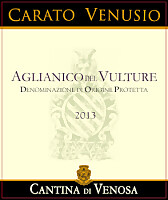
|
|
Aglianico del Vulture Superiore Carato Venusio 2013 |
|
| Cantina di Venosa (Basilicata, Italy) | |
 Aglianico Aglianico | |
| Price: € 25.00 | Score: |
 Intense ruby red and nuances of garnet red, little transparency. Intense ruby red and nuances of garnet red, little transparency. Intense, clean, pleasing, refined and elegant, starts with hints of
blackberry, prune and black cherry followed by aromas of dried violet,
blueberry, tamarind, cocoa, tobacco, licorice, leather, mace, rhubarb,
vanilla and menthol. Intense, clean, pleasing, refined and elegant, starts with hints of
blackberry, prune and black cherry followed by aromas of dried violet,
blueberry, tamarind, cocoa, tobacco, licorice, leather, mace, rhubarb,
vanilla and menthol.
 Properly tannic attack and however balanced by alcohol, full body,
intense flavors, pleasing roundness. Properly tannic attack and however balanced by alcohol, full body,
intense flavors, pleasing roundness.
 Persistent finish with flavors of blackberry, prune and black cherry. Persistent finish with flavors of blackberry, prune and black cherry. 24 months in barrique, 12 months in bottle. 24 months in barrique, 12 months in bottle. |
|
 Game, Braised and stewed meat, Roasted meat, Hard cheese Game, Braised and stewed meat, Roasted meat, Hard cheese |
|
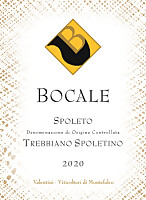
|
|
Spoleto Trebbiano Spoletino 2020 |
|
| Bocale (Umbria, Italy) | |
 Trebbiano Spoletino Trebbiano Spoletino | |
| Price: € 14.00 | Score: |
 Brilliant straw yellow and nuances of straw yellow, very transparent. Brilliant straw yellow and nuances of straw yellow, very transparent. Intense, clean, pleasing, refined and elegant, starts with hints of
apple, medlar and peach followed by aromas of hawthorn, broom, citrus
fruits, pineapple, pear, plum, marjoram and mineral. Intense, clean, pleasing, refined and elegant, starts with hints of
apple, medlar and peach followed by aromas of hawthorn, broom, citrus
fruits, pineapple, pear, plum, marjoram and mineral.
 Crisp attack and however balanced by alcohol, good body, intense
flavors, pleasing roundness. Crisp attack and however balanced by alcohol, good body, intense
flavors, pleasing roundness.
 Persistent finish with flavors of apple, medlar and peach. Persistent finish with flavors of apple, medlar and peach. 6 months in steel tanks. 6 months in steel tanks. |
|
 Stuffed pasta, Broiled crustaceans, Roasted white meat, Roasted fish, Mushroom soups Stuffed pasta, Broiled crustaceans, Roasted white meat, Roasted fish, Mushroom soups |
|
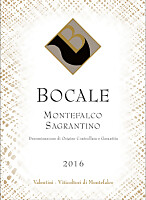
|
|
Montefalco Sagrantino 2016 |
|
| Bocale (Umbria, Italy) | |
 Sagrantino Sagrantino | |
| Price: € 29.00 | Score: |
 Deep ruby red and nuances of garnet red, little transparency. Deep ruby red and nuances of garnet red, little transparency. Intense, clean, pleasing, refined and elegant, starts with hints of
blackberry, black cherry and violet followed by aromas of plum, blueberry,
face powder, chocolate, tobacco, cinnamon, cinchona, mace, leather, vanilla
and menthol. Intense, clean, pleasing, refined and elegant, starts with hints of
blackberry, black cherry and violet followed by aromas of plum, blueberry,
face powder, chocolate, tobacco, cinnamon, cinchona, mace, leather, vanilla
and menthol.
 Tannic attack and however balanced by alcohol, full body, intense
flavors, agreeable. Tannic attack and however balanced by alcohol, full body, intense
flavors, agreeable.
 Persistent finish with flavors of blackberry, black cherry and plum. Persistent finish with flavors of blackberry, black cherry and plum. 24 months in cask, 12 months in bottle. 24 months in cask, 12 months in bottle. |
|
 Game, Braised and stewed meat, Roasted meat, Hard cheese Game, Braised and stewed meat, Roasted meat, Hard cheese |
|
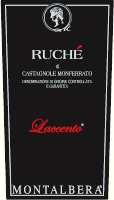
|
|
Ruchè di Castagnole Monferrato Laccento 2020 |
|
| Montalbera (Piedmont, Italy) | |
 Ruchè Ruchè | |
| Price: € 13.00 | Score: |
 Brilliant ruby red and nuances of ruby red, moderate transparency. Brilliant ruby red and nuances of ruby red, moderate transparency. Intense, clean, pleasing, refined and elegant, starts with hints of
cherry, raspberry and rose followed by aromas of violet, cyclamen,
strawberry, blueberry, black pepper, pomegranate and plum. Intense, clean, pleasing, refined and elegant, starts with hints of
cherry, raspberry and rose followed by aromas of violet, cyclamen,
strawberry, blueberry, black pepper, pomegranate and plum.
 Properly tannic attack and however balanced by alcohol, good body,
intense flavors, pleasing crispness. Properly tannic attack and however balanced by alcohol, good body,
intense flavors, pleasing crispness.
 Persistent finish with flavors of cherry, raspberry and strawberry. Persistent finish with flavors of cherry, raspberry and strawberry. Aged in steel tanks. Aged in steel tanks. |
|
 Meat appetizers, Cold cuts, Pasta with meat and mushrooms, Sauteed meat, Roasted white meat Meat appetizers, Cold cuts, Pasta with meat and mushrooms, Sauteed meat, Roasted white meat |
|
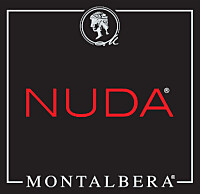
|
|
Barbera d'Asti Superiore Nuda 2018 |
|
| Montalbera (Piedmont, Italy) | |
 Barbera Barbera | |
| Price: € 21.00 | Score: |
 Intense ruby red and nuances of garnet red, little transparency. Intense ruby red and nuances of garnet red, little transparency. Intense, clean, pleasing, refined and elegant, starts with hints of
cherry, plum and blueberry followed by aromas of violet, blackberry,
chocolate, tobacco, leather, cinnamon, mace, vanilla and menthol. Intense, clean, pleasing, refined and elegant, starts with hints of
cherry, plum and blueberry followed by aromas of violet, blackberry,
chocolate, tobacco, leather, cinnamon, mace, vanilla and menthol.
 Properly tannic attack and however balanced by alcohol, good body,
intense flavors, agreeable. Properly tannic attack and however balanced by alcohol, good body,
intense flavors, agreeable.
 Persistent finish with flavors of cherry, plum and blueberry. Persistent finish with flavors of cherry, plum and blueberry. 15 months in barrique. 15 months in barrique. |
|
 Broiled meat and barbecue, Roasted meat, Stewed meat with mushrooms Broiled meat and barbecue, Roasted meat, Stewed meat with mushrooms |
|
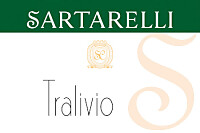
|
|
Verdicchio dei Castelli di Jesi Classico Superiore Tralivio 2019 |
|
| Sartarelli (Marches, Italy) | |
 Verdicchio Verdicchio | |
| Price: € 17.00 | Score: |
 Brilliant straw yellow and nuances of straw yellow, very transparent. Brilliant straw yellow and nuances of straw yellow, very transparent. Intense, clean, pleasing, refined and elegant, starts with hints of
apple, plum and hawthorn followed by aromas of broom, pear, grapefruit,
pineapple, anise, linden, rosemary, almond and mineral. Intense, clean, pleasing, refined and elegant, starts with hints of
apple, plum and hawthorn followed by aromas of broom, pear, grapefruit,
pineapple, anise, linden, rosemary, almond and mineral.
 Crisp attack and however balanced by alcohol, good body, intense
flavors, pleasing roundness. Crisp attack and however balanced by alcohol, good body, intense
flavors, pleasing roundness.
 Persistent finish with flavors of apple, plum and almond. Persistent finish with flavors of apple, plum and almond. Aged in steel tanks. Aged in steel tanks. |
|
 Stuffed pasta with fish, Roasted fish, Broiled fish, Roasted white meat, Stewed fish, Fish soups Stuffed pasta with fish, Roasted fish, Broiled fish, Roasted white meat, Stewed fish, Fish soups |
|
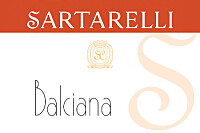
|
|
Verdicchio dei Castelli di Jesi Classico Superiore Balciana 2018 |
|
| Sartarelli (Marches, Italy) | |
 Verdicchio Verdicchio | |
| Price: € 38.00 | Score: |
 Intense golden yellow and nuances of golden yellow, very transparent. Intense golden yellow and nuances of golden yellow, very transparent. Intense, clean, pleasing, refined and elegant, starts with hints of
apricot, medlar and quince followed by aromas of noble rot, chamomile,
mango, peach, plum, pineapple, lychee, saffron, honey, grapefruit, linden,
rosemary and almond. Intense, clean, pleasing, refined and elegant, starts with hints of
apricot, medlar and quince followed by aromas of noble rot, chamomile,
mango, peach, plum, pineapple, lychee, saffron, honey, grapefruit, linden,
rosemary and almond.
 Crisp attack and however balanced by alcohol, full body, intense
flavors, pleasing roundness. Crisp attack and however balanced by alcohol, full body, intense
flavors, pleasing roundness.
 Very persistent finish with long flavors of apricor, medlar and mango. Very persistent finish with long flavors of apricor, medlar and mango. Aged in steel tanks. Aged in steel tanks. |
|
 Stuffed pasta with mushrooms, Roasted fish, Roasted white meat, Cheese Stuffed pasta with mushrooms, Roasted fish, Roasted white meat, Cheese |
|

|
|
Brunello di Montalcino Vecchie Vigne 2016 |
|
| Siro Pacenti (Tuscany, Italy) | |
 Sangiovese Sangiovese | |
| Price: € 105.00 | Score: |
 Intense ruby red and nuances of garnet red, little transparency. Intense ruby red and nuances of garnet red, little transparency. Intense, clean, pleasing, refined and elegant, starts with hints of
black cherry, plum and violet followed by aromas of rose, raspberry,
blueberry, cocoa, tobacco, tamarind, cinnamon, rhubarb, leather, licorice,
mace, vanilla and menthol. Intense, clean, pleasing, refined and elegant, starts with hints of
black cherry, plum and violet followed by aromas of rose, raspberry,
blueberry, cocoa, tobacco, tamarind, cinnamon, rhubarb, leather, licorice,
mace, vanilla and menthol.
 Tannic attack and however balanced by alcohol, full body, intense
flavors, pleasing crispness. Tannic attack and however balanced by alcohol, full body, intense
flavors, pleasing crispness.
 Very persistent finish with long flavors of black cherry, plum and
raspberry. Very persistent finish with long flavors of black cherry, plum and
raspberry.
 24 months in barrique. 24 months in barrique. |
|
 Game, Roasted meat, Stewed and braised meat, Hard cheese Game, Roasted meat, Stewed and braised meat, Hard cheese |
|

|
|
Brunello di Montalcino Riserva PS 2015 |
|
| Siro Pacenti (Tuscany, Italy) | |
 Sangiovese Sangiovese | |
| Price: € 170.00 | Score: |
 Brilliant ruby red and nuances of garnet red, little transparency. Brilliant ruby red and nuances of garnet red, little transparency. Intense, clean, pleasing, refined and elegant, starts with hints of
black cherry, plum and violet followed by aromas of rose, raspberry,
blueberry, pomegranate, blackberry, cinnamon, tobacco, cocoa, licorice,
leather, mace, graphite, cinchona, vanilla and menthol. Intense, clean, pleasing, refined and elegant, starts with hints of
black cherry, plum and violet followed by aromas of rose, raspberry,
blueberry, pomegranate, blackberry, cinnamon, tobacco, cocoa, licorice,
leather, mace, graphite, cinchona, vanilla and menthol.
 Tannic attack and however balanced by alcohol, full body, intense
flavors, pleasing crispness. Tannic attack and however balanced by alcohol, full body, intense
flavors, pleasing crispness.
 Very persistent finish with long flavors of black cherry, plum and
blueberry. Very persistent finish with long flavors of black cherry, plum and
blueberry.
 24 months in barrique. 24 months in barrique. |
|
 Game, Roasted meat, Stewed and braised meat, Hard cheese Game, Roasted meat, Stewed and braised meat, Hard cheese |
|
|
||||||||
|
DiWineTaste Polls
|
| |||||||
Privacy Policy | |||||||


| Copyright © 2002-2024 Antonello Biancalana, DiWineTaste - All rights reserved |
| All rights reserved under international copyright conventions. No part of this publication and of this WEB site may be
reproduced or utilized in any form or by any means, electronic or mechanical, without permission in writing from DiWineTaste. |